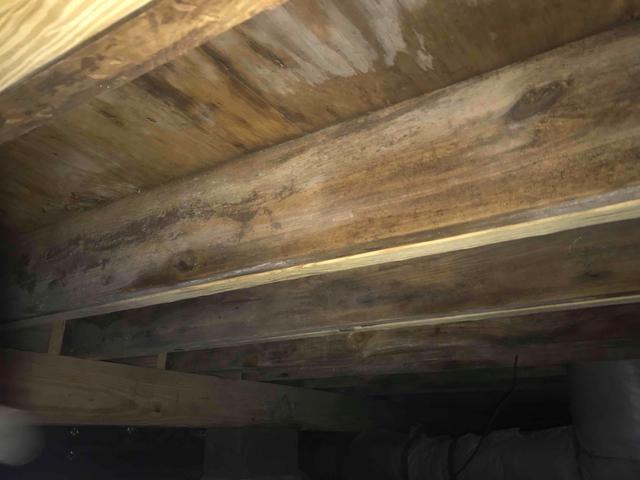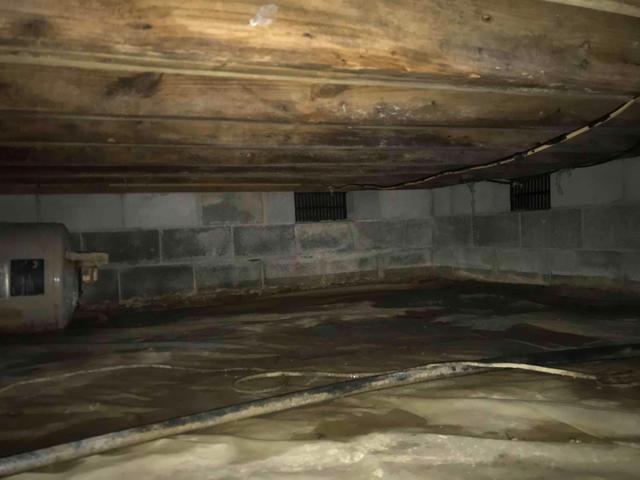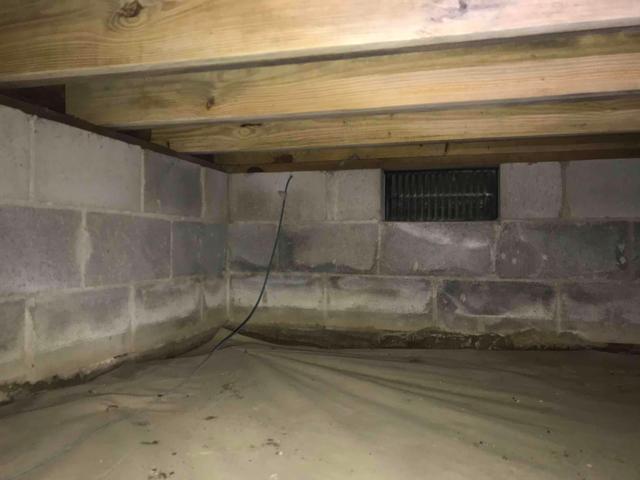
Mold and Mildew
Mold and mildew are growing on the floor joists of this crawl space. Mold spores often infiltrate unsealed crawl spaces and with a relative humidity of at least 60% and temperatures rising above 70 degrees Fahrenheit, the mold will begin to form. Musty odors coming from the mold and mildew will rise into the home and can cause irritation to those with allergies or asthma.

Vapor Barrier
The vapor barrier used in this crawl space is a flimsy 6-mil liner, with durability similar to a trash bag. It is often installed within crawl spaces in Virginia but offers little-to-no protection as it is easily ripped or torn, allowing moisture to rise into the crawl space from the ground, increasing the relative humidity. This can lead to mold and mildew growth, condensation, puddles, and structural damage.

Open Vents
The open vents lining the foundation walls of this crawl space are allowing outside air and moisture to influence the area. The idea behind the vents was to let the air outside help ventilate the crawl space and keep it dry. What happens is air and moisture become trapped and add to the increase in relative humidity and allow in pests, critters, snakes, and even water. The odors, allergens, and dust from all this are pulled up into your home resulting in poor indoor air quality.

Foundation Walls
The foundation walls of this crawl space are made of porous cinderblocks, which means moisture can infiltrate the crawl space through them. Efflorescence is visible on the walls, meaning that water has seeped through, bringing the salts and minerals from within these blocks to the surface. During the warmer, wetter seasons the temperatures are high enough to where the relative humidity can increase in the crawl space, and during the colder, dryer seasons the outside air will make the first floors of a home colder, and cause your heating system to turn on more often, raising your energy bills.


